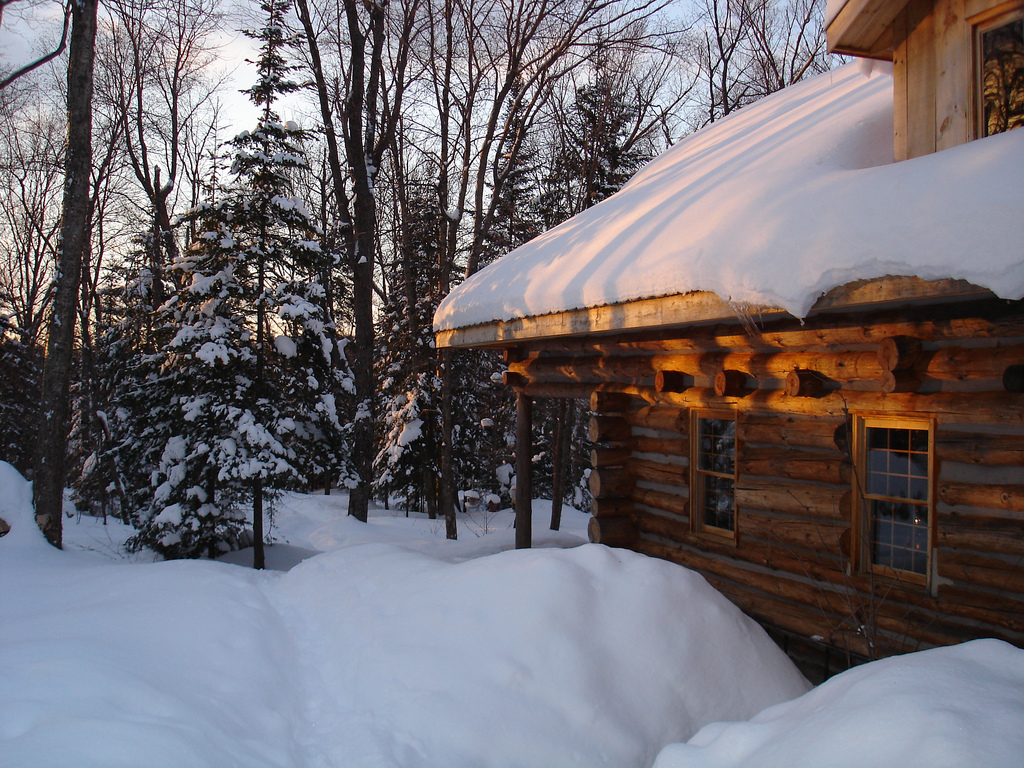|
Listen To The Article
|
If you live in an area that often sees standing snow for weeks or months at a time during the winter, you are surrounded by some of the best insulation you can use for your home.
“Banking” is the process of building snow around your home to help keep it insulated, and it’s a proven technique that can help cut your heating costs during the winter months. This technique is ideal for those who live in climates where there isn’t a real thaw until March, so that the snow stays in place all winter. It will still work in slightly warmer climates, but you need to be cognizant of any thawing cycles and add snow when necessary.
Although the concept may seem too simple to be true, banking your home with snow can add some serious insulation power. For every inch of snow, you gain an extra R-value of 1 or more for your walls. R-value indicates the capacity of a material to resist heat flow. The higher the R-value a material has, the greater the insulation power. Most older homes are built with R-11 insulation, while newer homes can have insulation with R-13 or higher. Regardless of the type of insulation you have in your walls, banking with snow can significantly increase your home’s ability to retain heat.
Are You Prepared For A Long-Term Blackout? Get Backup Electricity Today!
When banking your home with snow, the goal is to build a wall of snow around the base of your home 2-4 feet high. You can do this by simply shoveling the snow up in drifts until they are at the desired height, but most people find it easier to use a piece of plywood roughly 4 feet by 8 feet with a bracing pole to keep it vertical. Starting at the corner of your structure, place the piece of plywood about two feet from the wall of your home, and then use the pole to brace it vertically. Make sure that you use a bracing pole strong enough to hold the weight of the plywood and the weight of the snow as you start to pack it in.
Shovel snow in between the piece of plywood and your structure until you reach the desired height. Be sure to pack the snow down as you go so it can resist any winds that may blow it away. As you finish one section of the wall, move the plywood one length down the structure and pack the next section. Continue this method until you’ve built a snow wall two feet thick and at least two feet tall around every part of your home. You may not be able to build a continuous wall around your entire home because of stairs or ground level doors, but any section you can bank with snow helps. It will make a significant difference.
Of course, while banking with snow, it is extremely important not to block any vents that may extrude from your home. Gas appliances, electric clothes dryers and other home appliances use these vents to get rid of gases that can prove toxic if built-up to certain levels.
It’s also important to keep a close eye out for warmer temperatures. As soon as it looks like a thaw is imminent, remove the snow around your home to prevent any moisture from seeping in. Modern-day homes typically have good moisture barriers to prevent this, but an older home may not have the proper prevention in place.
Aryn Young is a writer and farmer currently living in Homer, Alaska.
Have you ever banked snow around your home? What advice would you add? Share your tips in the section below:
Are You Prepared For A Downed Grid? Read More Here.
 Off The Grid News Better Ideas For Off The Grid Living
Off The Grid News Better Ideas For Off The Grid Living




